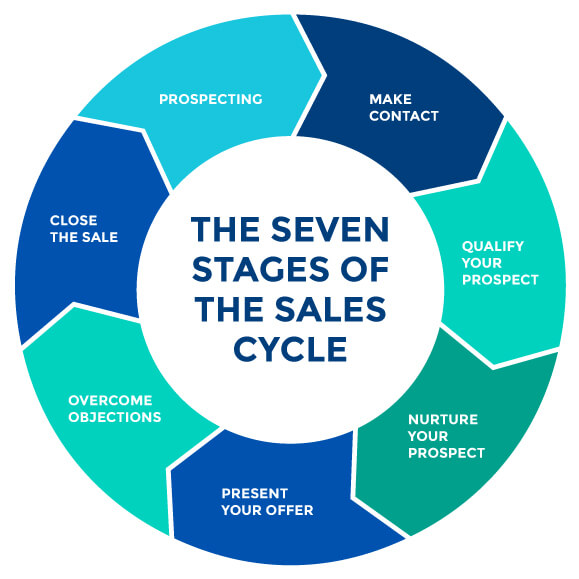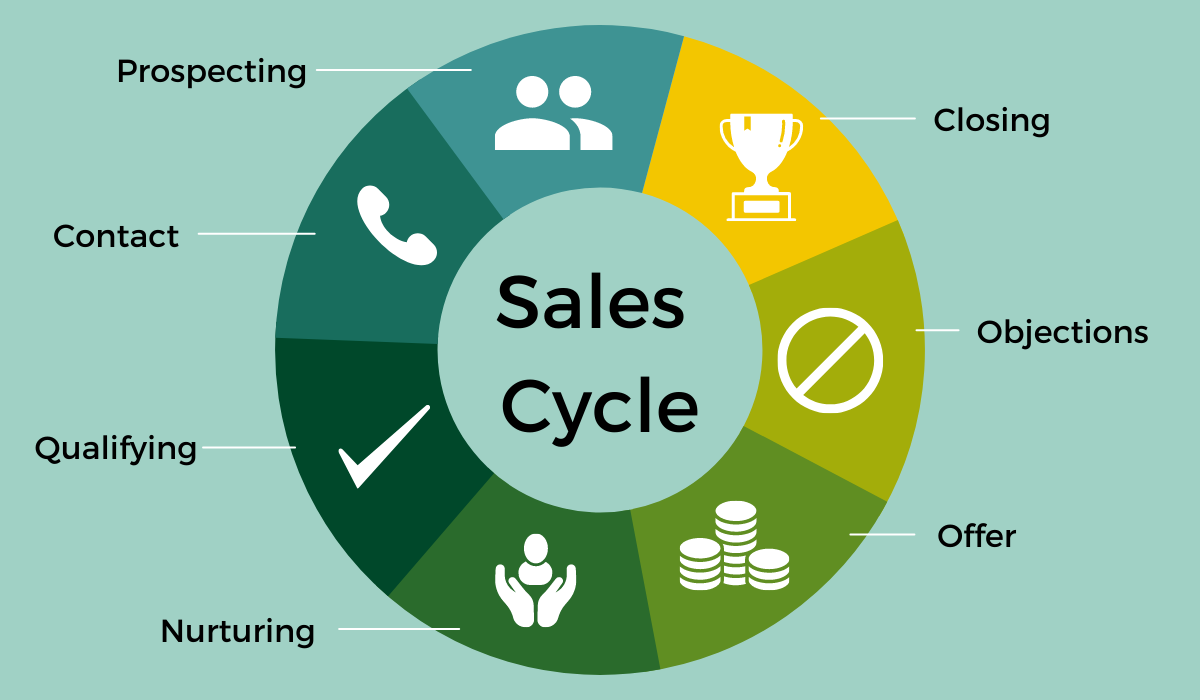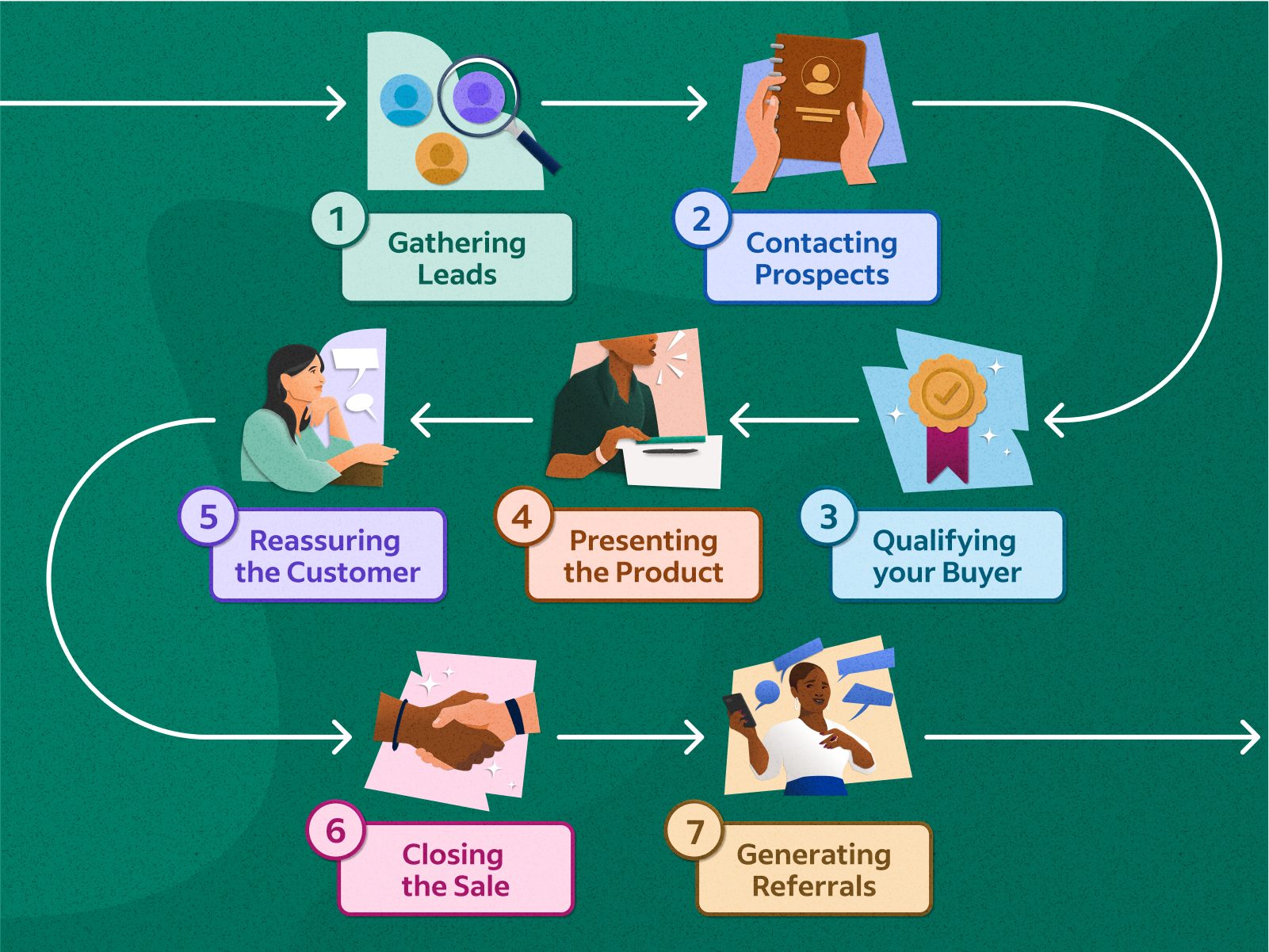What is a Sales Cycle?
What if I told you that understanding the sales cycle could be the key to improving your sales results? It’s not just a fancy term thrown around the boardroom; it’s a crucial component of any successful sales strategy. So, let’s break it down together.

This image is property of d1eipm3vz40hy0.cloudfront.net.
What Is a Sales Cycle?
A sales cycle is the systematic process companies follow to sell their products or services. Think of it as the roadmap guiding you from the first interaction with a potential customer to closing the deal. Every interaction along this journey shapes your chances of success.
Why is the Sales Cycle Important?
The importance of a sales cycle cannot be overstated. Without clearly defined stages, it’s easy to lose track of where you are in the process or, worse yet, miss opportunities. A consistent sales cycle helps you track progress, forecast future sales, and ultimately improve your overall sales performance.
Stages of the Sales Cycle
Understanding the sales cycle stages can clarify how to approach your potential customers. Each stage represents a distinct part of the process and requires different strategies. Let’s walk through these stages, shall we?
1. Prospecting
Here’s where it all begins: prospecting. This is the stage where you identify potential customers interested in your product or service. Think of it as searching for hidden treasure. You’re not just looking for anyone; you want to find the right people more likely to convert into customers.
2. Preparation
In the preparation stage, you gather all the information you need about your prospects. This involves researching their behaviours, needs, and preferences. Would you go to a party without knowing what you’ll wear? Of course not! Similarly, being well-prepared can make all the difference in a sales situation.
3. Approach
Now that you’re knowledgeable, it’s time to make your move. The approach stage involves reaching out to your prospects. This could be through a phone call, email, or a face-to-face meeting. The goal here is to establish a connection and grab their attention.
4. Presentation
Once you’ve made contact, the next step is the presentation. This is your moment to shine! You showcase your product or service and explain how it meets your potential customer’s needs. Think of it like presenting a captivating performance; you want to keep your audience engaged and interested.
5. Handling Objections
Having a smooth ride to a sale is rare without encountering objections. Objections are often a good sign—they indicate that your prospect is thinking critically about the decision. This stage involves addressing any concerns or hesitations they might have. It’s your chance to turn a ‘no’ into a ‘yes’ with the right answers and reassurances.
6. Closing the Sale
We’re approaching the finish line. The closing stage is when you ask for the sale directly. It can be nerve-wracking, but if you’ve effectively navigated through the previous stages, your prospects will feel good about buying. It’s like the moment in a movie when the hero finally embraces their destiny!
7. Follow-Up
This stage often gets overlooked, but follow-up is crucial. After closing the sale, a follow-up ensures customer satisfaction and may lead to future sales or referrals. Think of it as a post-party thank-you note—essential for maintaining relationships and keeping the lines of communication open.
Benefits of Following a Sales Cycle
Implementing a well-structured sales cycle can have many benefits. Let’s examine some of them!
Consistency in Sales Approach
A consistent process means every team member can operate with the same steps. This not only streamlines efforts but also aligns everyone on the same goals. Whether you’re a team of one or a hundred, consistency is key.
Improved Efficiency
With a defined sales cycle, you can pinpoint where you’re losing prospects and adjust your strategies accordingly. By understanding which stages take longer or see more objections, you can refine your approach to become more efficient in converting leads into customers.
Better Forecasting
Predicting future sales becomes much easier when you’ve got a clear view of your sales cycle. You can analyze data from previous cycles and use that information to forecast realistically. This also makes planning much less daunting.
Sales Process vs. Sales Cycle
It’s common for people to confuse the terms “sales process” and “sales cycle.” While they’re related, they are not the same. Let’s break it down.
1. Definition of Sales Process
The sales process refers to the steps your sales team takes to convert leads into customers. It’s often more detailed and can vary significantly among companies, depending on their unique selling strategies.
2. Definition of Sales Cycle
As discussed earlier, the sales cycle outlines the time it takes from initial contact with a prospect to closing the sale. It focuses more on the timeline and stages rather than specific actions.
Key Differences:
| Aspect | Sales Process | Sales Cycle |
|---|---|---|
| Definition | The Steps taken to convert a lead | Duration of time from contact to sale |
| Focus | Detailed actions and strategies | Timeline and stages |
| Variability | Can vary significantly between companies | Common stages are similar across industries |

This image is property of assets.mailshake.com.
How to Optimize Your Sales Cycle
Now that you’re familiar with the sales cycle and its significance, you might wonder how to make it even more effective. Here are some practical tips to consider as you refine your approach.
1. Analyze Your Current Cycle
Understanding where you currently stand is crucial. Take the time to analyze your existing sales cycle. Identify bottlenecks, noting where leads drop off or where conversions are highest. This insight can guide your optimization efforts.
2. Refine Your Prospecting Methods
Especially in the early stages, how you identify and reach out to prospects can influence your entire cycle. Utilize various strategies, such as inbound marketing, referrals, and social media outreach, to enhance your prospecting methods.
3. Train Your Team Regularly
Invest time in continuous training for your sales team to keep everyone on the same page. Ensure they understand the sales cycle and have the tools they need to succeed. Remember, an informed team is an empowered team.
4. Use CRM Tools
Customer Relationship Management (CRM) tools can help you track and analyze your sales cycle more effectively. They provide insights into customer interactions, helping you optimize your strategies based on accurate data.
5. Gather Feedback
After closing sales, don’t hesitate to ask for customer feedback. Their insights can highlight areas for improvement in your process and provide perspectives you may not have considered.
Common Challenges in the Sales Cycle
While navigating the sales cycle can lead to great success, it’s essential to be prepared for challenges. Here are some common hurdles and ways to overcome them.
1. Lack of Clear Goals
Without specific goals, a sales cycle can easily get derailed. To mitigate this issue, set short-term and long-term goals aligning with your overall business objectives. This will keep you focused and moving forward.
2. Poor Communication
Communication breakdowns within your team or with prospects can severely impact your sales cycle. Foster an environment where open dialogue is encouraged and ensure everyone is updated and aligned.
3. Inadequate Follow-Up
As mentioned earlier, follow-ups are pivotal in keeping the momentum of the sales cycle alive. Establish a follow-up rhythm that your team can adhere to. Too many missed follow-ups can cost you valuable conversions.
4. Resistance to Change
Sometimes, teams find comfort in the status quo, making it challenging to implement changes. Introduce new strategies gradually and ensure communication of the benefits of adapting to the new process.
5. Misalignment in Process Stages
If team members have different interpretations of the sales cycle, it can lead to confusion. Regular training sessions can help ensure everyone is educated about the defined stages and their importance.

This image is property of 8414155.fs1.hubspotusercontent-na1.net.
Real-World Examples of Effective Sales Cycles
To cement your understanding, look at examples of companies that have successfully implemented effective sales cycles.
1. Company A: Tech Solutions
Company A, a tech solutions provider, experienced a substantial drop in leads at the presentation stage of its sales cycle. After analyzing its process, it discovered that its demo was too technical and didn’t resonate with its target audience. By simplifying its presentation and focusing on user experience, it managed to significantly improve its conversion rates.
2. Company B: A Local Bakery
A local bakery used a straightforward sales cycle emphasising community engagement and customer follow-up. After each purchase, they would send personal thank-you notes or invite customers to upcoming community events. This approach fostered a loyal customer base and resulted in consistent repeat business.
Final Thoughts
Understanding the sales cycle is essential for improving your sales results, and the benefits are numerous. From providing a clear roadmap to enhancing efficiency and forecasting sales, a well-defined cycle can transform how you approach potential customers.
As you implement or refine your sales cycle, keep in mind that it is a living process—one that should evolve as your business grows. By identifying opportunities for optimization, seeking feedback, and consistently aligning your team, you can create a robust sales strategy that drives success.
Remember, every sale begins with understanding the journey. Happy selling!

This image is property of images.ctfassets.net.